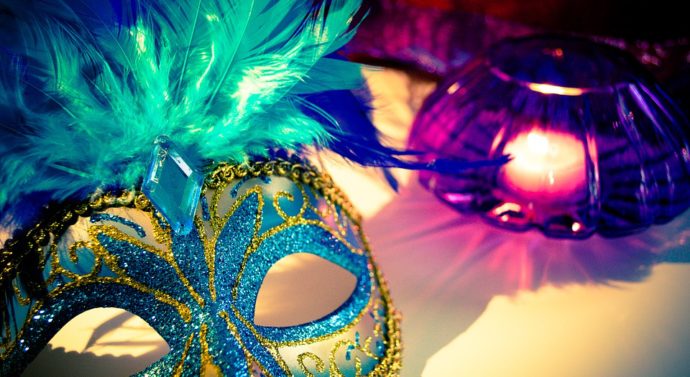
The making of Mardi Gras: the little known history behind the celebration
Weekend February 16, 2018, Comments Off 95This past Tuesday was Mardi Gras, a festival celebrated the day before a 40 day Christian observance centered around self-restraint called Lent. Mardi Gras, also known as Fat Tuesday, is typically the polar opposite of this. While many people are familiar with modern day celebrations of Mardi Gras, the history behind the event is typically lesser known.
Background
Sophomore Claire Plaster admits that she has never been taught much about the origins of Mardi Gras.
“All you ever hear about is the crazy party aspect of it,” said Plaster. “Honestly, I’ve never learned anything about the history of the holiday. If I had to guess, I would say it probably started in New Orleans since that seems to be the hub of it, but I don’t have a clue.”
Plaster is not alone, as this is a sentiment that is echoed amongst many who are familiar was the holiday.
“I know that it’s a day of excess and partying, both of which are pretty stereotypically American things, so it would make sense if Mardi Gras started here,” said sophomore Sophie Black.
These assumptions may not be that far off. According to the official website of Mardi Gras New Orleans, this celebration can be traced back to the 17th and 18th centuries in medieval Europe. After passing through Rome and Venice, the tradition traveled to France and its colonies. It is from there that the tradition of “Beouf Gras,” or the fatted calf, crossed the Atlantic to arrive in America.
“On March 2, 1699, French-Canadian explorer Jean Baptiste Le Moyne Sieur de Bienville arrived at a plot of ground 60 miles directly south of New Orleans, and named it ‘Pointe du Mardi Gras’ when his men realized it was the eve of the festive holiday,” according to Mardi Gras New Orleans’s website.
A few years later in 1703, America celebrated its first Mardi Gras in what is now Mobile, Louisiana.
“In 1710, the ‘Beouf Gras Society’ was formed and paraded from 1711 through 1861,” said the site. “The procession was held with a huge bull’s head pushed along the wheels by 16 men. Later, Rex would parade with an actual bull, draped in white and signaling the coming Lenten meat fast. This occurred on Fat Tuesday.” Rex is the “King of the Carnival,” invented to preside over the parade.
According to the site, it was not until 1730s that Mardi Gras was celebrated in New Orleans, but it was definitely not to the caliber that we see today until much later.
“The first Mardi Gras parade was held in New Orleans on Feb. 24, 1857 by the Krewe of Comus. They began the tradition of presenting a parade with floats and following it with a ball for the krewe and their guests,” said the site. A krewe is an organization that puts on a parade or ball for the celebration.
Modern adaptations
When several Drury students were asked what were the first words that come to mind when they thought of Mardi Gras, some common responses were: beads, festive, king cake, masks, crazy, and New Orleans.
Today, Mardi Gras has exploded into a nationwide holiday of celebrating the last day before the fasting that goes along with lent. The epicenter of the activities for Mardi Gras has become New Orleans, Louisiana. CNN reports that every year, an average of 1.4 million people flood the streets of New Orleans for the festivities.
For the Mardi Gras experience without driving to all the way to Louisiana, Saint Louis, Missouri claims to host the United States’ largest Mardi Gras party outside of New Orleans.
Mardi Gras is a well-known and loved tradition celebrated all over the world. While the history behind the event is fascinating in itself, the true beauty of Mardi Gras lies within experiencing the festivities for oneself. While this year’s events have culminated, it’s never too early to start planning your trip for next year!